 |
| Waterfalls |
1.Victoria Falls (Zambia and Zimbabwe)
Victoria Falls, the largest waterfalls in the world, is a destination like no other. The falls are part of the Zambezi river, which forms a border between Zambia and Zimbabwe. At the falls the Zambezi river cascades an amazing 108 meters (360 feet) over a width of 1,708 meters (5,604 feet). The falls were named after Queen Victoria by the European explorer David Livingstone who is thought to be the first European to view the falls. The native name of the falls is Mosi-oa-Tunya which means ‘Smoke that Thunders’. Victoria falls is listed as a UNESCO World Heritage Site and is visited by roughly a million tourists per year. One particularly popular feature of the falls is Devil’s Pool, a pool at the edge of the falls where people can swim and look over the falls without being pulled over by the current due to a natural rock wall that creates the pool. This can only be done from September to December when the river flow is at a safe level. Devil’s Pool is located on the Zambian side of the falls and is accessed from Livingstone Island, while most of the viewing areas of the falls are located on the Zimbabwean side. Visitors can view the falls from both countries, but there are considable visa charges involved in doing so, on top of the day pass charges each country asseind accommodations in Livingstone, Zambia, and the town of Victoria Falls, Zimbabwe.






2. Niagara Falls (Ontario, Canada and New york, USA)
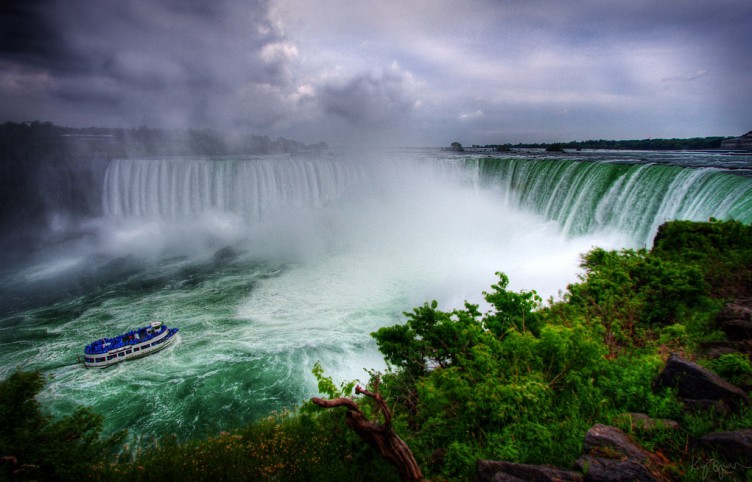
Niagara Falls, located in both Ontario, Canada and New York, USA, is the name of a group of three individual waterfalls: American Falls, Bridal Veil Falls, and Canadian Falls (aka Horseshoe Falls). Together, these waterfalls are the most powerful in North America. Niagara Falls is situated between the twin cities of Niagara Falls, New York, USA and Niagara Falls, Ontario, Canada. Horseshoe Falls has the highest drop at 173 feet (53 meters), while the waters flowing over American Falls tumble about 100 feet (30 meters). More impressive, though, is the sheer amount of water flowing over Niagara Falls, up to 202,000 cubic feet (5,700 cubic meters) per second during peak flow. A small island called Goat Island separates the American and Canadian sections of the falls. Niagara Falls is a very popular tourist destination, drawing over 28 million tourists per year. Visitors can take a tour on the iconic Maid of the Mist boat, enjoy a ride on the Niagara Scenic Trolley, or splurge on a Flight of Angels helium balloon ride for a unique aerial view. At night, Niagara Falls is lit up by colorful floodlights creating a breathtaking scene like no other.
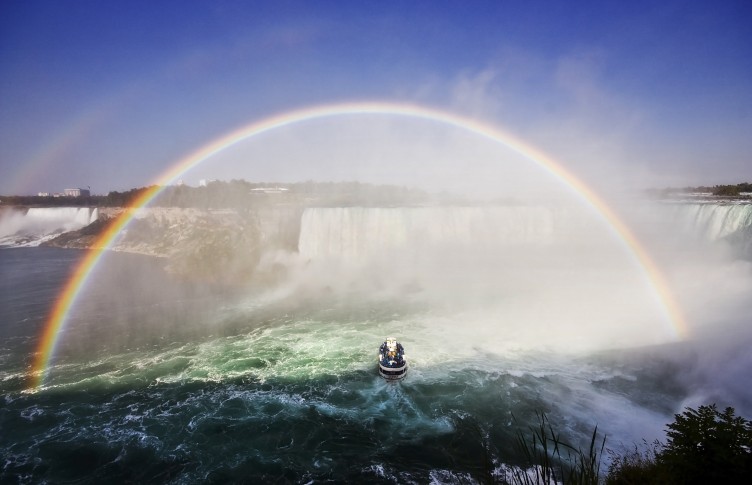





3. Vernal Falls (Yosemite, California. USA)
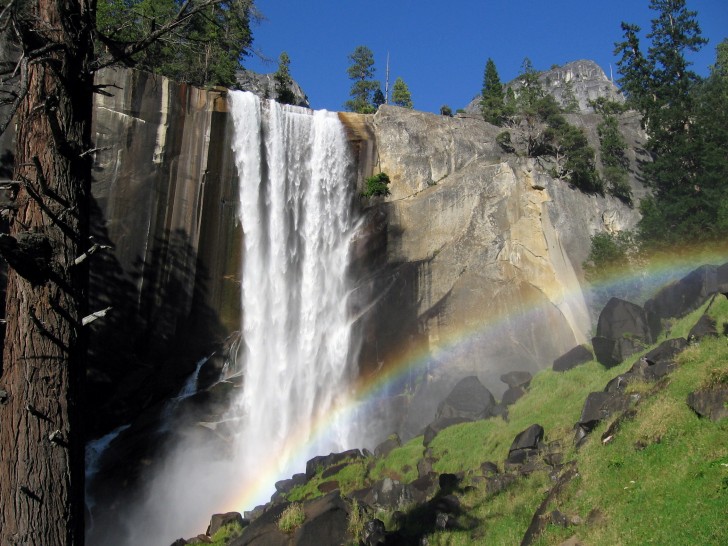
One of the most popular waterfalls in Yosemite National Park of California in the United States, Vernal fall measures 97 meters (317 feet) high. A hike along the Mist Trail to the fall takes visitors very close to the fall where they become shrouded in its mist. The hike to Vernal Fall is short at only 2.1 km (1.3 miles) long. At the top of the fall hikers enjoy a rest at the Emerald Pool, named for its deep green color, which is a small lake where some visitors choose to swim, though it is against the park rules and can be dangerous if care is not taken. Travelers who wish to visit Vernal Fall should make it a part of a greater trip to the awe-inspiring Yosemite National Park where many other spectacular natural sights can be enjoyed. Accommodation is plentiful at the park and includes hotels as well as campgrounds. There is a $20 fee to enter Yosemite National Park.



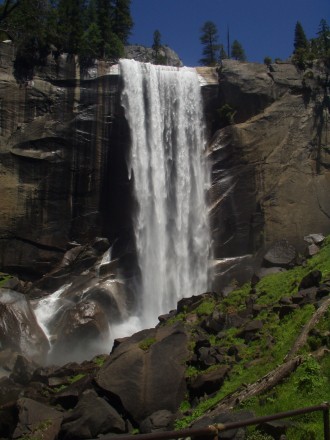
4. Gullfoss (golden falls, Iceland)

One of the most popular tourist attractions in Iceland, the Gullfoss is a 2-tiered waterfall with a total height of 32m (105ft). Also known as the Golden Falls, the Gullfoss is part of the Hvítá river. Nearby attractions include the Haukadalur geysers and Þingvellir national park. Together, these 3 sites are called the Golden Circle. Because of the popularity of the falls there is hotel accommodation nearby, but most visitors opt to stay in Reykjavík and visit the falls on the Golden Circle day trip.





5.Havasu Falls (Arizona, USA)
On the Havasupai Indian Reservation within Grand Canyon National Park in Arizona you will find the gorgeous Havasu Falls. The picture perfect falls features a blue-green pool below which is excellent for swimming. Havasu Falls is fairly difficult to reach by foot, requiring a drive to Hualapai Hilltop and then a 16 km (10 mile) hike to the Falls via the tiny village of Supai which is 3 km (2 miles) from the falls. For those not up to the long hike, a helicopter ride to Supai can be had, followed up by a horseback ride to the falls. Visitors can camp near the falls, and the village of Supai has one lodge and one cafe. Otherwise the best options for accommodation can be found 177 km (110 miles) away in the town of Seligman. The area also features four other waterfalls: Navajo Falls, Supai Falls, Mooney Falls, and Beaver Falls.

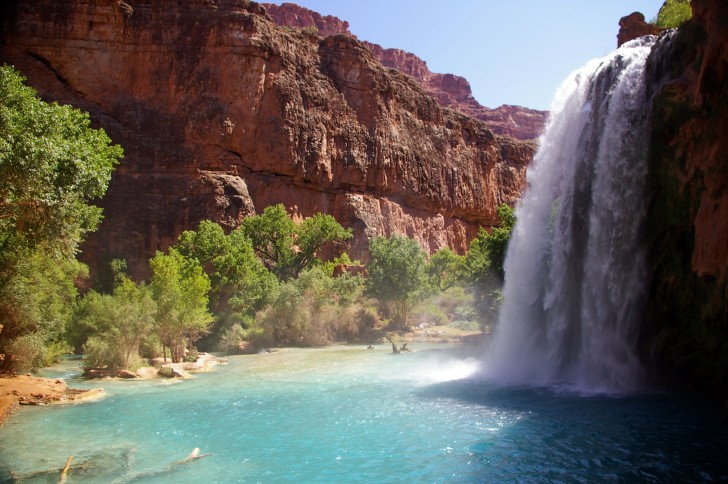


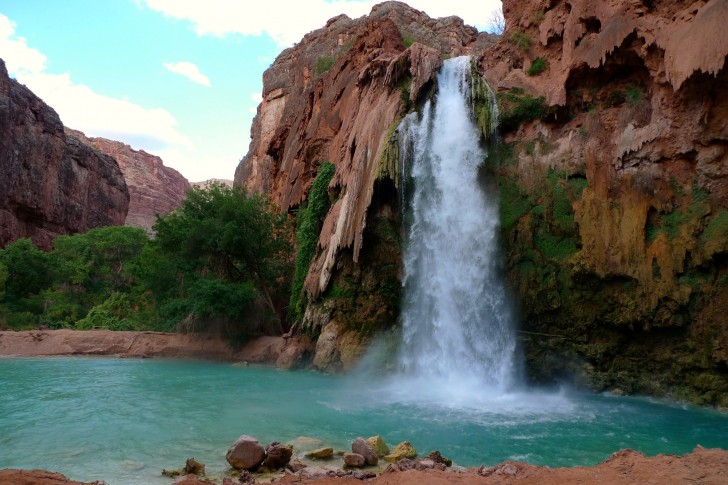

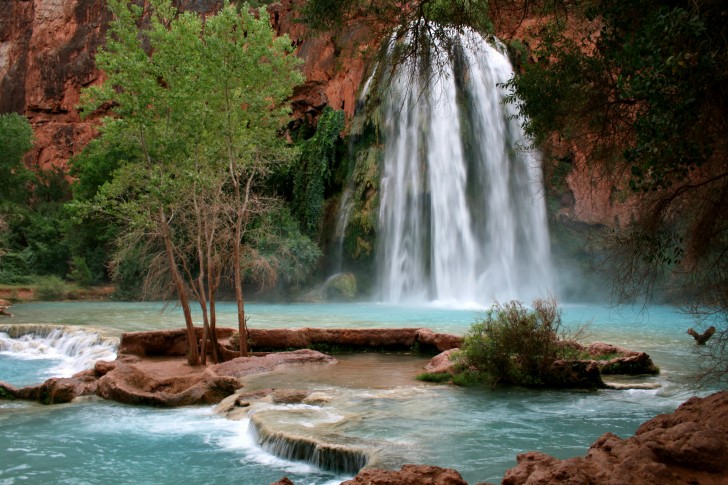

6.Angel Falls (Venezuela)

Angel Falls is the world’s highest waterfall at 979 meters (3,212 feet). Because the water falls so far it becomes a fine mist which can be felt a mile away before it reaches the ground below. The falls spill from a cliff near the summit of Mount Auyantepui into the Kerep River (also called the Rio Gauya). Named after the American aviator Jimmie Angel, Angel Falls is located in the state of Bolívar in Venezuela and is a UNESCO World Heritage Site. The falls is becoming a popular tourist destination, but it is still difficult to visit. To get to the base of the falls one must fly to Canaima camp and embark on a river trip from there. River trips can be taken only from June to December, as the river to too low in the dryer months. Alternatively, one can book an aerial flyby of the falls, but a view of the falls is not guaranteed as they are usually surrounded by clouds.




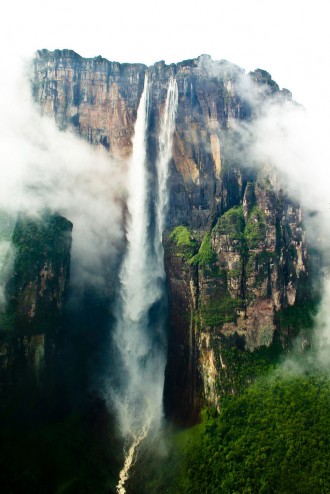

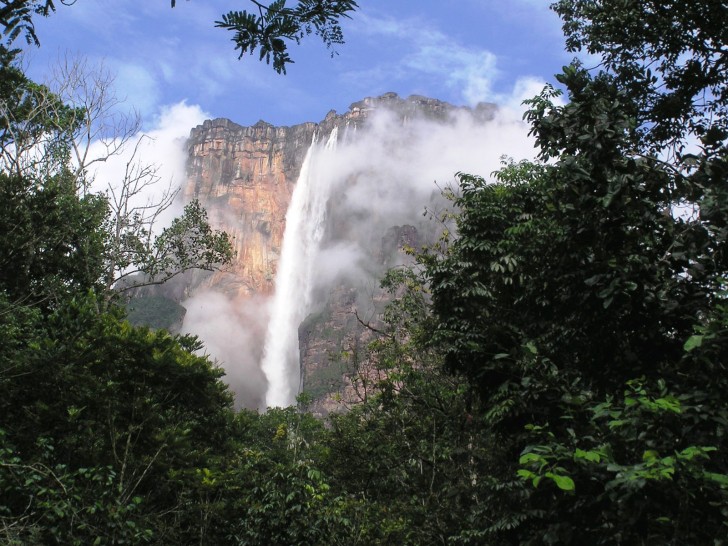

7. Iguazu Falls (Argentina and Brazil)



Tidak ada komentar:
Posting Komentar